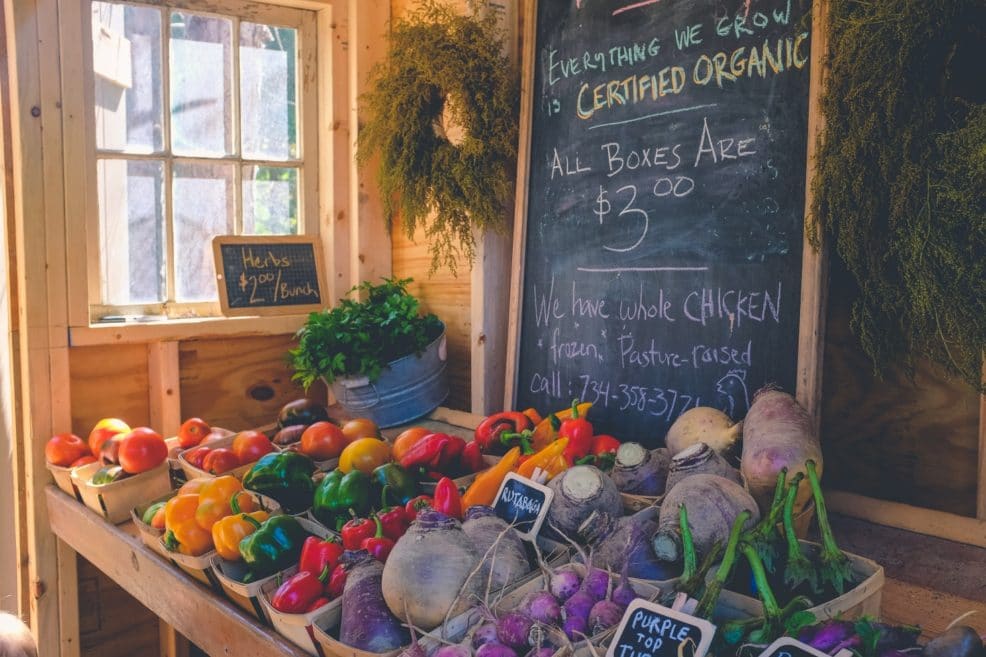Why Eat What’s Down the Street: Part 1
A case for buying and eating local foods and how modern food production and transportation harms our health
Food, glorious food. But, how glorious can food be if most of it travels distances up to 1,500 miles from the farm to your dinner table, losing nutrients and gaining pesticides and herbicides along the way.
In this blog, we’ll look at the health implications of modern food production and transportation. We’ll define the four types of foods (industrial, non-organic, organic, and local), and make a case for why eating local is the best option for your personal health and the health of your community.
The Root of Healthy Food
In the article, Big Food, Food Systems, and Global Health, David Suckler explains how the foundation of our current food system is motivated by maximizing profits rather than delivering the best food to your doorstep.
Most food grown in the United States is conventional or industrialized, which means “food that is commercially prepared (often through processing).” This allows the industry to maximize production and minimize cost, resulting in less nutrient-dense food riddled with preservatives to extend shelf life.
In contrast, eating local food means choosing and celebrating the variety of foods grown close to home. By eating local, you’re automatically eating seasonal food picked at peak ripeness, which supports the nutrient density of the food. Nutrient-dense food supplies your body with what it needs to function optimally.
In fact, it’s shown we’re better off buying local food that is non-organic, or “food that’s not grown using natural methods,” than we are buying industrial food that is organic, or “food grown using natural farming methods.” Why is this? Because industrial food labeled organic is still sprayed and treated with pesticides and herbicides while en route to your neighborhood grocery store.
If we were to stack the four ways food is produced, from least to most nutrient-dense, it would look like this:
- Little-to-no nutrients: Industrial, non-organic food
- Some nutrients: Industrial, organic food
- More nutrients: Local, non-organic food
- The most nutrients: Local, organic food
Now that we have a clearer understanding of the different ways food is produced and how they can impact our personal health, let’s look at four ways eating local favorably impacts our lives and our community.
1.) In addition to being healthier, local food tastes better.
If you’ve ever bought a fresh tomato from your local farmers market, or made a sandwich with bread from your local bakery, you’ve likely experienced the euphoria of vine-ripened produce and local ingredients that simply taste better. Thank the nutrient-density of your local food for that punch of flavor – something that’s lost in industrial food.
2.) Locally-sourced food stimulates the economy in which you live.
For every $100 spent at a non-local business, such as a fast-food restaurant or chain grocery store, only $43 goes back to your community. For the same money spent at a local business, $68 stays in your community.
3.) Buying local strengthens your connection to the community and improves customer service.
Perusing your local farmers market can be far more enjoyable than feeling obligated to wind up and down the aisles of the grocery store. Farmers markets are kid-friendly and pet-friendly, making it easy to turn into a family outing where you can get to know your neighbors and support their business. You’ll also come to find customer service is much more personalized when you shop local since business owners take great pride in their work and their community.
4.) Eating local protects the environment.
There is a significant reduction in gas emissions and runoff carrying harmful toxins into lakes, groundwater, and other bodies of water when we buy locally. According to good food finder, local food also protects biodiversity: “In the last century, we have lost 75% of the genetic diversity in the foods we grow and eat.” Locally grown and sourced food combats this lack of diversity by saving, sharing, and using seeds native to each region. This makes our food system more secure and natural.
Local food is the pathway to eating healthy that not only supports our own wellbeing, but the health of our local economy, community, and environment. The case for eating local is as much a discussion about health – personal and global – as it is an ethical one.
In part two of “Why Eat What’s Down the Street,” we’ll provide a step-by-step guide on where to source locally-grown food in the Valley and what is safe to continue buying at the grocery store.
WellStyles and Valley Schools
If you’d like to learn more about WellStyles, a wellness program exclusive to Valley Schools, reach out to us. We’d love to hear from you!

